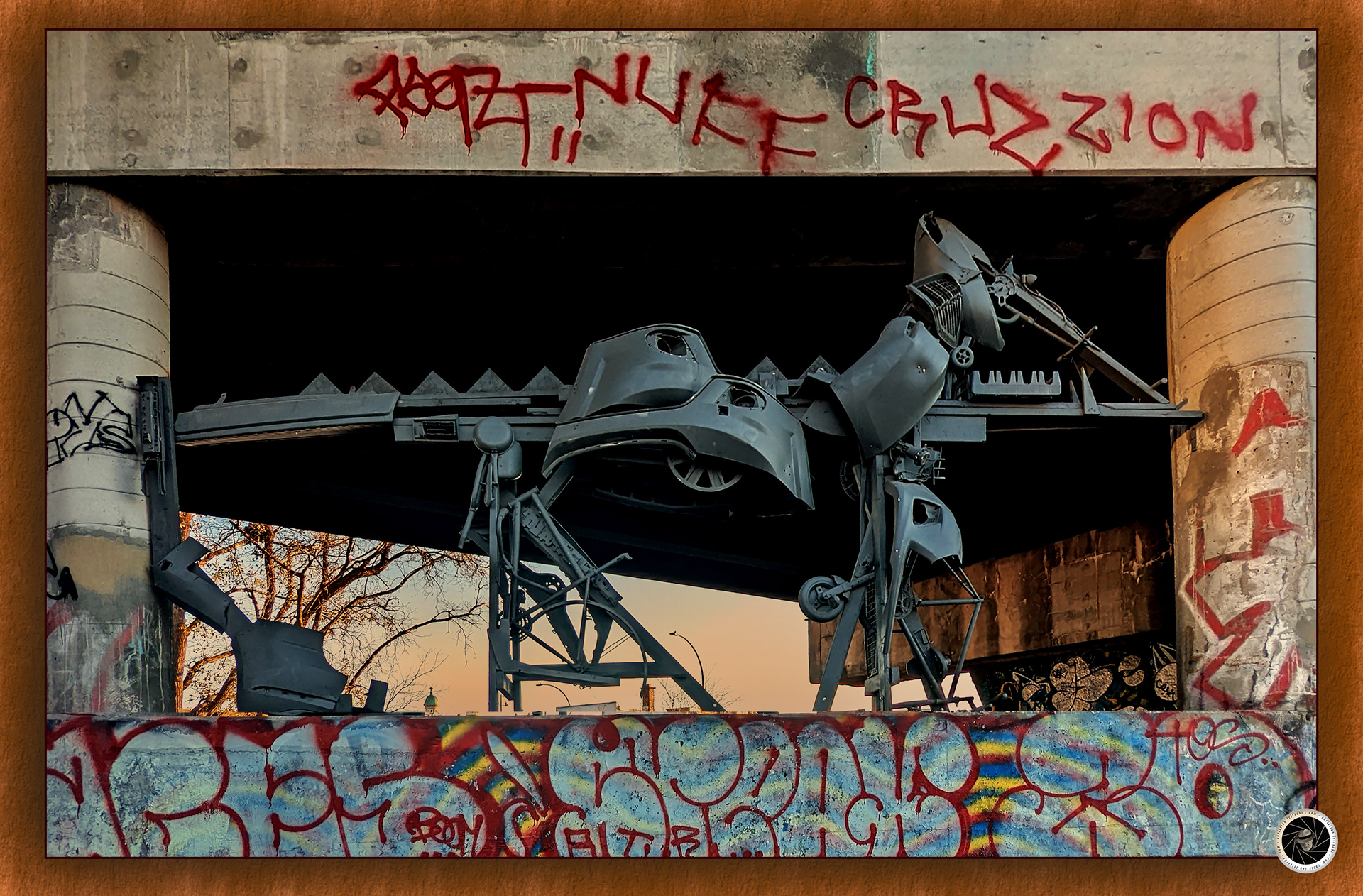
I won the Digital Artistry February 2022 contest at the Nikonians.org with this Photoshop version of the Welder you see on the right. Another example of before & after.

Junko Installation Van Horne Skatepark

Palau de la Musica, Barcelona
Nikon 1V1 Nikkor 10-30mm f3.5-5.6 @ 10mm (27mm equiv).
"Body Parts" project. PS CC 2021; Nik SilverEfexPro
Nikon D600 Nikkor 70-200mm f2.8E FL ED @ 122mm f8 1/160s ISO 100 One Rectangular Softbox, SB800 flash
Post-prod in Photoshop CC 2021 and Nik Suite plugin. Eyes colorized with Color replacement brush. Color closely replicating true color as remembered.

Ilford HP 5 Printed on Ilford Ilfobrom mat paper. Scanned on Epson Perfection V300. Image taken in early '80's. Nikon FE; Zoom-Nikkor 35-105mm
Postprod in PS CC 2021: closer crop, skin smoothing, elimination of left hand & forearm
Nikon D500; Nikkor 200-500mm @ 500mm (750mm equiv) f5.6 1/1600s ISO 720
"The Elusive Portrait" PS CC 2020
Nikon D600 Nikkor 70-200mm f2.8E FL ED @ 200mm f8 1/125s ISO 100
Ile Bonsecours, Montreal - IR landscape colorized in PS CC 2021. City of Mtl flag added to mast on green roof. Luminar replacement sky.
SOOC IR shot before channel swapping. Nikon D200 IR converted Dx Nikkor 18-35mm @18mm (27 equiv) f8 1/100s ISO 400
Reframing, Luminosity adjustments & Sky Replacement in PS CC 2021
Iles de Boucherville Winter 2014, Nikon D600 Nikkor 18-35mm @18mm f8 1/250s ISO 400
IR image, channel swapped & colorized in PS CC/Nik ColorEfex
IR converted D200 Nikkor 18-35mm @ 23mm (34mm equiv) f16 1/100s ISO 100
Barcelona Fiddler 2013, PS CC Nik SiverEfex 2
Nikon 1 V1 NIkkor 10-100mmPD @ 58mm (157mm equiv) f5.6 1/320s ISO 110
Japanese model after tighter crop to focus on features, dodge & burn to improve lighting on face & eyes. PS CC, Nik SiverEfex 2
Nikon D600 Nikkor 70-200mm f2.8E FL ED @ 122mm f5.6 1/160s ISO 200 SB800 in Softbox
Original image twirled to provide bg. Spherized multi image. PS CC
Nikon D500 Sigma 100-400mm @ 320mm f6.3 1/2000s ISO 1100
Extended barn roof to provide sufficient space for multi bird poses. Replaced bg, PS CC
Nikon D500 Nikkor 200-500mm f5.6 @ 500mm (750mm equiv) f8 1/1250s ISO 1000
Added second individual, cleared branches & replaced bg. PS CC
Nikon D500 Nikkor 300mm f4 PF +Tc 1.4x III @420mm (630mm equiv) f7.1 1/1600s ISO 560
A challenge: illustrate RGB and its complementary colors in one image. The original macro shot of a daisy was resized, rotated & colorized (petals and pistil separately) using a number of layers & masks in PS CC 2021, Nik Color Efex 2 for color pop.
A macro of a daisy. Shot in a tent illuminated from outside and addition of Lume cubes for lateral textural lighting. Nikon D750 Micro Nikkor 105mm f2.8 + Kenko ext tube (36mm + 12mm) @ f16 1/2000s ISO 100 Novoflex Microrail
More of the same challenge. This time the eyes are the focus of the colorization. The Fabergé egg idea came to mind immediately. Several transform tools in PC CC 2020 to achieve spherization and elongation into egg shapes.
Water/glycerine droplets hanging on silver necklace reflecting the backgound poster. Nikon Z6 Micro Nikkor f2.8 @ f8 1/100s ISO 100 Lume cubes.
Peggy's Cove Lighthouse, N.S, 2007. The final image was clear to me. A very bleak contrastless day calls for a high contrast B&W. I liked the idea of having silhouettes cut across a replacement sky. The sunrays and the lighthouse spot also took on a life of their own. PS CC 2021, Luminar 4, Nik Silver Efex 3
Nikon D200 Dx Nikkor 18-200mm @ 26mm f11 1/320s ISO 100
